
Brightline: Progress, Potential, a Whole New Market?
Written by David Peter Alan, Contributing Editor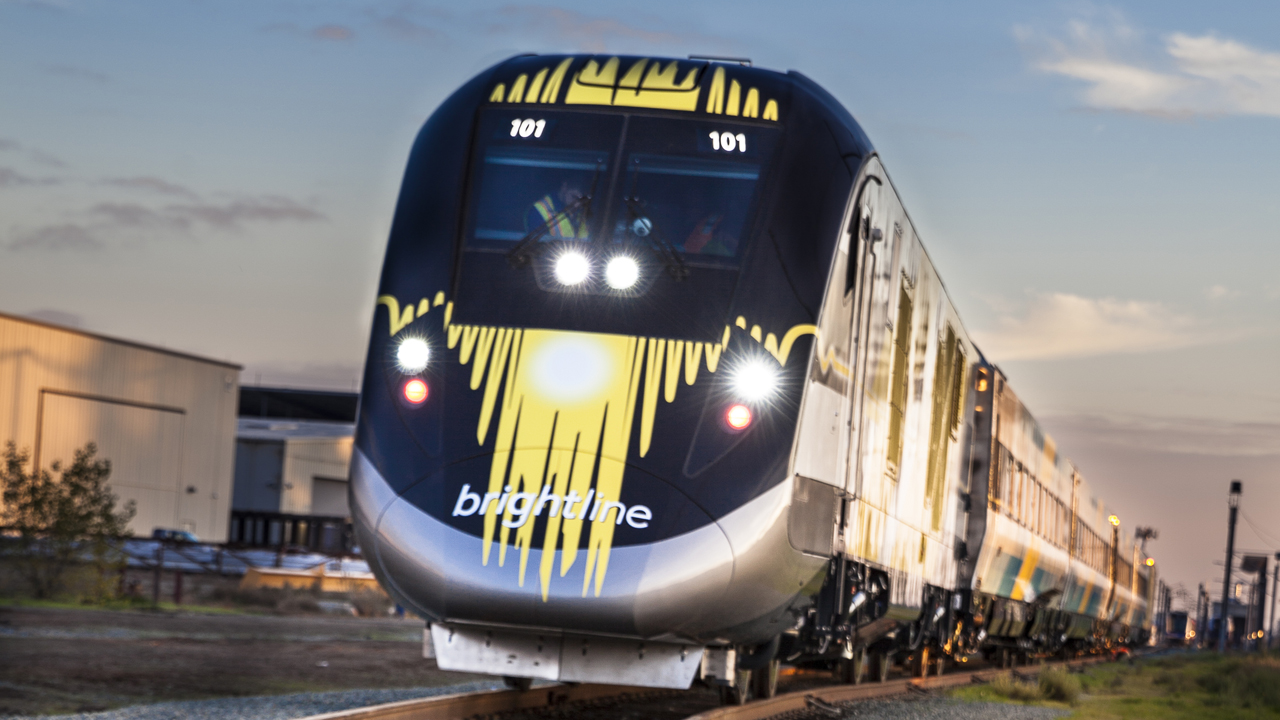
Brightline service resumed Nov. 8, 2021, following a suspension on March 25, 2020, due to the pandemic.
Brightline, Florida’s private-sector passenger railroad, is progressing in its effort to extend service north to Orlando International Airport (OIA) and beyond. There is also an opportunity for Brightline to capture an entirely new ridership base, if the railroad is willing to add a specific new line of service.
Phase 3 of the project will extend the line to Tampa and to Disney Springs, a station on the Disney property between Tampa and OIA; OIA is Phase 2; and the current line is Phase 1 (see map below). For Phase 2, top speed on the segment between West Palm Beach and Cocoa will be 110 mph (Class 6 track) and 125 mph for most of the rest of the route to the airport (Class 7 track).
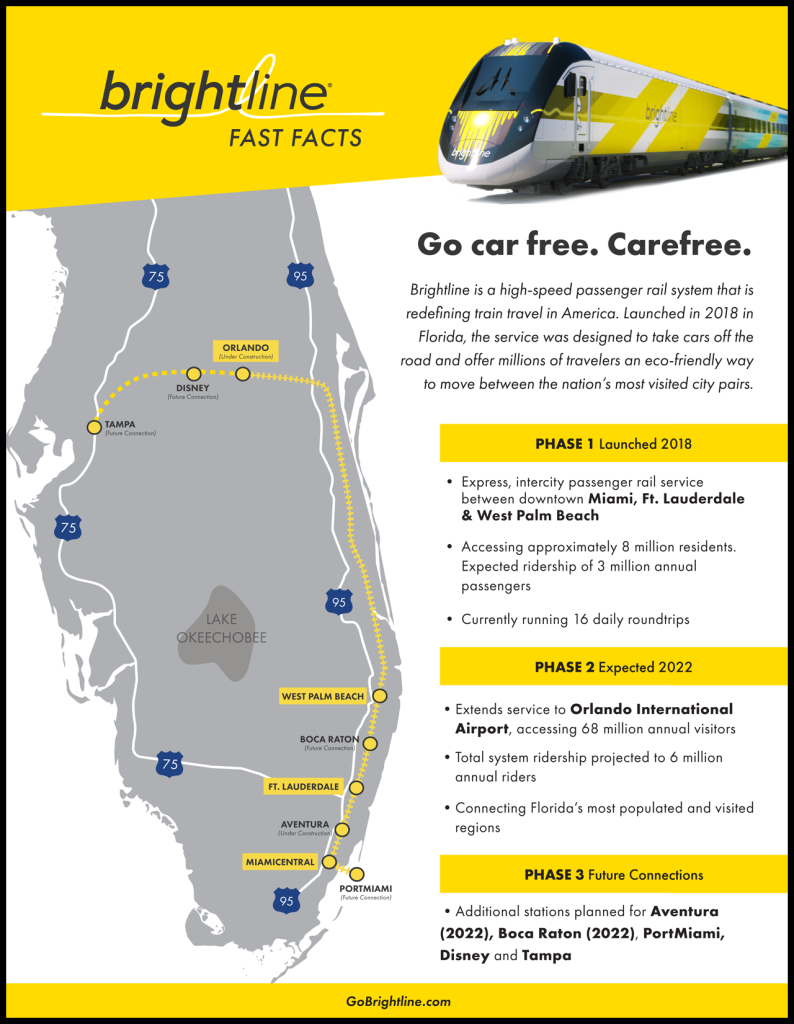
Phase 2 Construction Under Way
Brightline on Feb. 15 reported completing the first major construction zone for the extension from West Palm Beach to OIA. This is Zone 2 (of 4); the segment near the airport. According to Brightline Director of Public Affairs Katie Mitzner: “Zone 2 is a 3.5 mile-long section of Brightline’s corridor leading into OIA and represents one of the most-complex and challenging areas of construction in the entire project.”
“Brightline’s Zone 2 travels in an engineered double track that travels under active airport taxiways and over tug roads running through the heart of OIA,” according to railroad. Construction here includes six bridges; two underpasses; and several airport improvements, including a new traffic interchange configuration at Cargo Road, located north of the airport and the airport’s first roundabout designed to assist with traffic flow.
Brightline trains are slated to run through the airport corridor at 35 mph, before entering the 125-mph portion of the line between there and the historic Florida East Coast (FEC) main at Cocoa.
Service is expected to begin sometime in 2023.
Other Recent Developments
Current service between downtown Miami and West Palm Beach was suspended for 19-1/2 months (from March 25, 2020, until Nov. 8, 2021) on account of the COVID-19 pandemic. When it resumed, it included a new feature: Brighline+. It connects rides, private or shared, for the first and last miles of a trip that includes a Brightline train segment. The railroad’s slogan: “No car. No problem. We’ll take you door to door.”
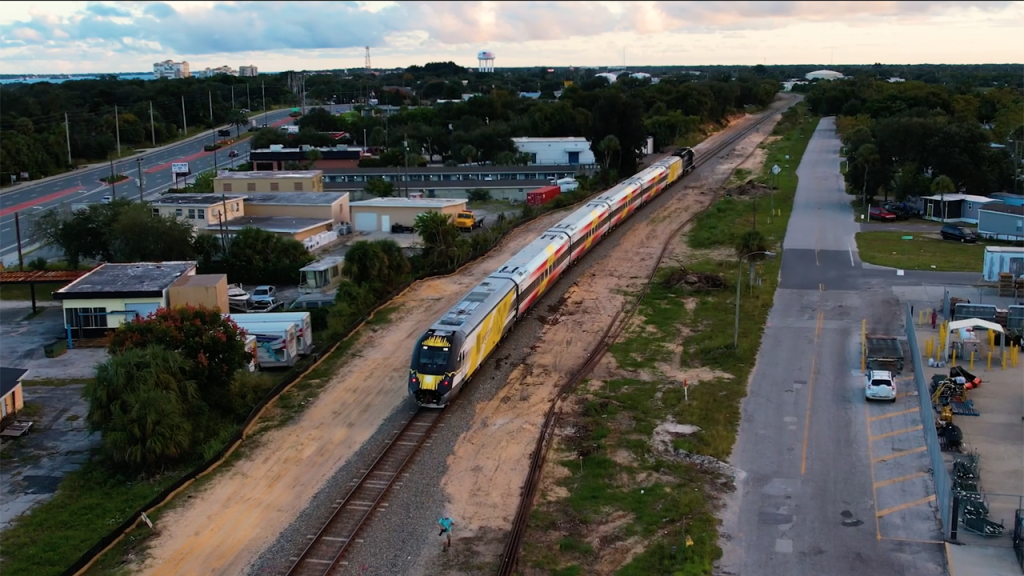
Brightline is also taking delivery on five new “Venture” trainsets from Siemens. The first arrived at West Palm Beach on Oct. 14. Test runs began on host railroad FEC right-of-way to Cocoa on Jan. 18. There is one “qualifying train” running each day without passengers at 60 mph, for the purpose of training crews on the route. At that time, Brightline said construction on the 170-mile Orlando extension is more than 70% complete. The operator expects to reach substantial completion by the end of the year, with services now starting in 2023 rather than late 2022 as was hoped.
Brightline’s Mitzner told Railway Age that an FEC pilot is familiarizing three Brightline crew members with the route, and they will train another 30 to produce a full roster for the Orlando Airport extension when it opens next year.
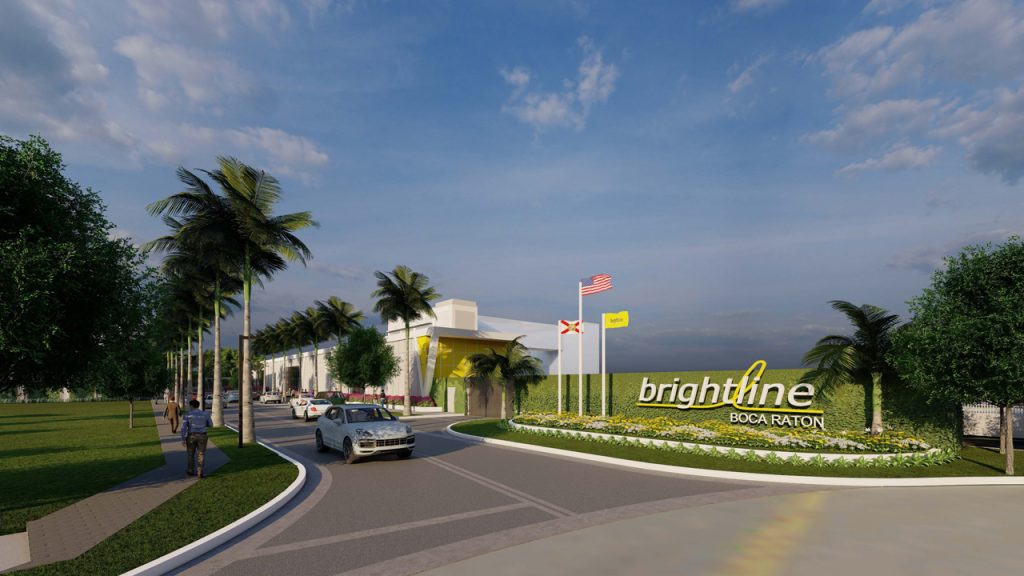
In addition, the railroad broke ground for a new $56.2 million station at Boca Raton on Jan. 25. Slated for completion this fall, the station is located on the operator’s 67-mile line between Miami and West Palm Beach, Fla. Boca Raton is the southernmost town on the line in Palm Beach County and still boasts many structures built by architect Addison Mizner, a leader in creating South Florida’s “Mediterranean Revival” style in the 1920s, with its Spanish flavor. The old FEC station is still standing and serves as a small railroad museum today, but it lacks the parking and other facilities that the new station will have.
Brightline is also building a station at Aventura, on the Miami side of the line between Miami-Dade and Broward counties. Brightline also plans to run commuter trains from there, south to downtown Miami and north to Deerfield Beach, at the northern end of Broward County.
An Old Controversy, a Litigation, a Potential New Solution, and a Case in Point
Much has happened at Brightline during the past three years or so. British billionaire Richard Branson had taken over branding rights for his company Virgin Enterprises, a flirtation that lasted for a brief time before Brightline went independent again. Service between Miami and West Palm Beach that could be best described as “luxury commuter service” started, stopped due to COVID-19, and started again.
Plans are still under way for local “commuter” trains on the historic FEC, and there was a litigation initiated by elected officials and residents in the towns north of Palm Beach County, who objected to the line and wanted to stop it. Originally, Martin (which contains Stuart), St. Lucie (which contains Fort Pierce) and Indian River (which Contains Vero Beach, once known as “Vero”) counties joined forces in an effort to keep Brightline’s high-performance (110 mph) trains out of their counties.
While their action bears some resemblance to the one initiated by Texas landowner James Frederick Miles against the proposed Texas Central high-speed rail line between Dallas and the intersection of two highways near Houston, there is a fundamental difference between the two cases. As Railway Age has reported, the challenge to Texas Central will probably win at the Texas Supreme Court, while the Florida challenge against Brightline failed.
According to Ruth Stanbridge, Indian River County Historian and former County Commissioner, the objection that local residents had was not to the train itself, but to having to live with the hassles of construction and operation, when the trains would not stop in their local area. In other words, the “locals” would be stuck with the drawbacks of having a high-performance train zoom past them, and would not get the benefit of the access and mobility that the train could deliver.
Stanbridge told Railway Age: “We were concerned about fast trains on the tracks, and there was no extra protection at grade crossings.” She said that while safety was an issue, local residents could not even ride the trains.
The Indian River County Historical Society operates a small museum in the old FEC train station that highlights the history of Vero Beach and other towns in the county. Stanbridge told Railway Age that the station building is the last-surviving wood frame station from the era when developer Henry M. Flagler started the railroad. It was built in 1903, and originally stood at another location in town. The city had earmarked the present location as a new home for the station in 1924, but it was not moved there until the 1980s; long after the passenger trains were gone. It lacks a platform today but, if one is built, the station could operate at the location where the town wanted to put it nearly a century ago.
It is understandable that Brightline managers would want to speed past the historic coastal towns to get to OIA faster, if speed were their only objective. If Brightline did run some local trains making the stops along the coast that the old FEC made, it could be a new objective for those trains to capture riders from a historic catchment area that has been ignored for almost six decades. According to Stanbridge, although Brightline had no interest in serving the communities in the three counties, Vero wanted a station when Flagler was building the FEC in the 1890s, but he did not give them one until 1903. That’s the yellow and gray frame building that now houses the county museum.
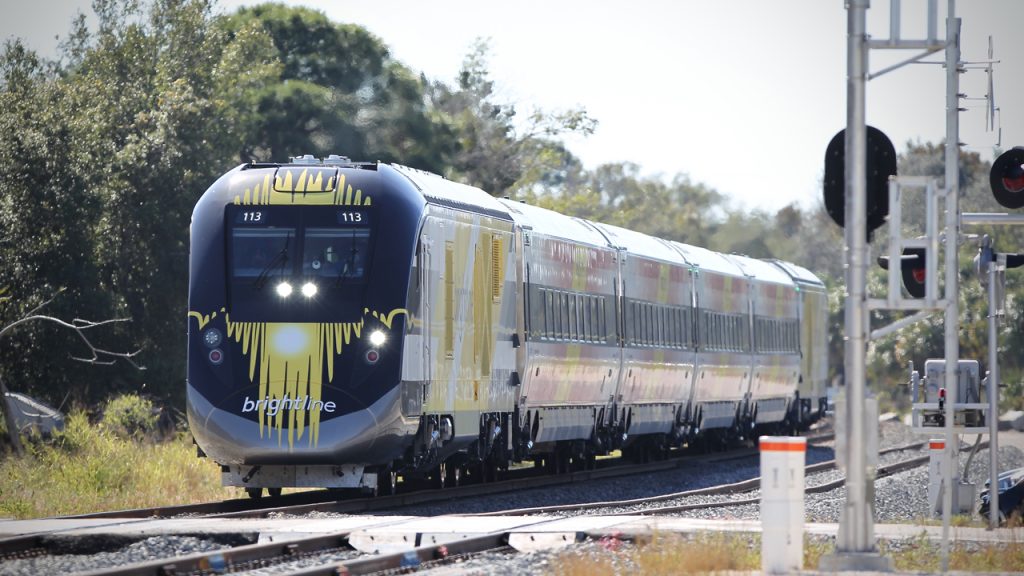
A New Service, if There’s Room on the Line
Everybody is waiting anxiously for the new Brightline trains to OIA, and eventually to Tampa. After all, Brightline is the first private-sector railroad in the United States to operate passenger trains since the Denver & Rio Grande Western gave up its independent tri-weekly Rio Grande Zephyr between Denver, Colo., and Salt Lake City, Utah, in 1983 and the route became a part of Amtrak’s California Zephyr route, which continues to operate today. The question remains, though: Could Brightline do more, especially to serve the population it bypasses?
At one time, FEC was the premier railroad for tourists traveling from the Northeast and Midwest to the land of sun, fun and year-round warm weather. Until a crippling strike forced the railroad to halt all service except for one train between Jacksonville and North Miami (daily, except Sundays) in January 1963, FEC ran through cars on many of the trains that originated in New York or Chicago, with a major switching operation at Jacksonville. That train ran under the “strike schedule” until 1968, with the railroad posting notices to prospective passengers that they would be riding the train at their own risk. Still, the running time was fast: 7:35 from Jacksonville to North Miami and 7:20 to return. The trains did not go to downtown Miami then, which would have taken an additional 20 minutes. Those schedules were faster than today’s on the now-suspended Silver Meteor, which Amtrak says will return to the rails on March 27. That train is scheduled to take 9:05 from the current Jacksonville station (not located near downtown) to Miami Station (in Hialeah), and 8:32 for the northbound trip.
The faster running time and the beach-oriented destinations on the FEC route were big draws until almost 60 years ago, and former Amtrak Board Chair John Robert Smith proposed running one of Amtrak’s trains on that route. That was about 20 years ago, when there were three trains between New York and Florida, and each would have been routed differently in the Sunshine State. Like other good ideas that Smith proposed at the time, it was never implemented.
At one time, Brightline officials had talked about running along the FEC to Jacksonville, and Mitzner says that Brightline has a passenger easement to operate such a service. That plan makes sense, especially since there is so little access to any of the towns along the route for non-motorists; many of whom live in the big cities along Amtrak’s Northeast Corridor (NEC). Today, the towns along the old FEC are served by only one daily Greyhound bus north of Palm Beach County, and the bus stops are not located near any of the downtown or beach areas; places where tourists would go. The only exception is St. Augustine, a historic tourist mecca that has two local bus runs daily to and from Palatka, where Amtrak trains stop. Further south, but north of Palm Beach County, local bus service is weak; not running evenings or Sundays, and time-consuming when it does run.
Brightline is the first in decades to start a new regularly scheduled private-sector passenger railroad. Even if the line goes no further than OIA, Brightline will make American railroad history for that achievement alone. Still, there appears to be another catchment area of riders in places along Florida’s historic East Coast where every train will zoom by, without stopping and giving the locals a chance to go somewhere, too. The same could be said about the towns north of the the new line that will soon be built west of Cocoa: Titusville, New Smyrna, Daytona Beach and St. Augustine. Those are the historic towns that made Florida the world-famous tourist destination that it is today. The “locals” there might want to go somewhere, too, or city-dwelling visitors might want to go to those towns.
Henry M. Flagler would have approved of such a plan. He built the FEC to take people to the wide-open coastal spaces of Old Florida, south of St. Augustine. Then the new towns that he developed after his railroad reached them built the tourist attractions that bring so many motorists to the Sunshine State today. With the right decision at Brightline, non-motorists and folks who would prefer to take the train could also be welcome, as history repeats itself.



